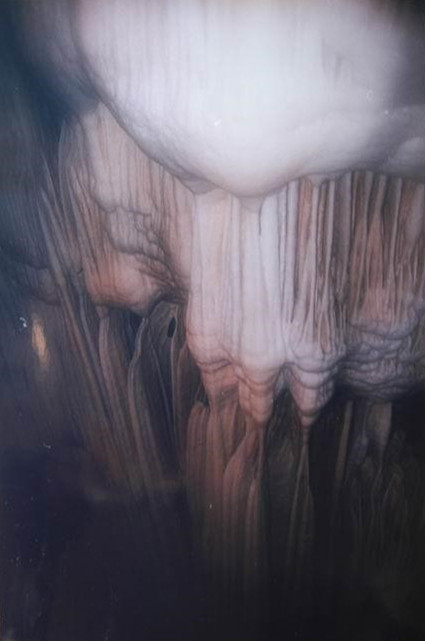Makou Caves in Yongshan County, Zhaotong
Chinese Name: 永善县码口乡溶洞群
English Name: Makou Caves in Yongshan County, Zhaotong
Overview:
The Makou Caves are situated in Makou Town, Yongshan County, Zhaotong, spread across villages like Makou, Xinmin, and Liqi. These caves cover an area of over 150,000 square meters and are located to the northwest of the Makou Town government seat, on the southern bank of the Jinsha River. The caves are approximately 6 kilometers from the town center, accessible via well-established roads, water, and electricity. The region is known for producing economic crops such as sugarcane, Sichuan peppercorn, and citrus fruits.
Makou Village, home to these caves, is part of the scenic northeastern Yunnan’s Wumeng Mountain range and is located along the lower reaches of the Jinsha River. This small village is under the jurisdiction of Yongshan County and enjoys a unique geographical location. It is bordered by Zhaoyang District of Zhaotong City to the east, while the Jinsha River lies to the west, separating it from Sichuan Province’s Liangshan Prefecture. Despite its modest size, Makou Village is renowned for its stunning natural landscapes, particularly the fascinating cave clusters hidden among the mountainous terrain. Among these, the most captivating is the Niulang Zhinü Cave.
Niulang Zhinü Cave:
The Niulang Zhinü Cave is notable for its fascinating layout, extending in a north-south direction close to the Jinsha River. Covering an area of more than 150,000 square meters and stretching nearly a thousand meters in length, this cave complex is a natural marvel. Legend has it that these two caves were once a single entity, separated over tens of thousands of years by the persistent flow of water. The entrance to the cave is wide and imposing, standing over ten meters high and wide enough to fit two large trucks. Inside, visitors are greeted by a spectacular “underground Great Wall,” constructed from neatly arranged stone slabs, resembling a natural fortress. The cave’s winding passages, along with the presence of bats, add an aura of mystery, and the cave’s actual depth remains unknown.
Zhinü Cave:
Zhinü Cave, located across the river from Niulang Cave, is a water cave with an entrance merely 20 centimeters high. Water cascades from a towering cliff, forming a breathtaking waterfall at the cave’s mouth. Inside the cave, the right side mirrors the “Great Wall” feature seen in Niulang Cave, with a charming “city gate” and passage in the center. On the left side, there is a “leaning tower,” which shows traces of human modification. As you venture deeper, you’ll enter a magnificent forest of stalactites and stalagmites, with massive stone columns resembling the pleated skirts of Yi girls, creating an awe-inspiring sight.
How to Get There:
- From Yongshan County: The Makou Caves are approximately 6 kilometers from the Makou Town government seat. Visitors can use local transport options such as taxis or buses to reach the caves. Driving is also an option for those seeking a more flexible schedule.
- From Zhaotong City: The caves are accessible from Zhaoyang District, Zhaotong’s main urban area. Renting a car or hiring a taxi provides a more convenient and quicker route to Makou Town.

Travel Tips:
- Best Time to Visit: The Makou Caves are open to visitors year-round. However, the autumn and winter months provide the clearest views and the most pleasant weather for cave exploration.
- What to Bring: Comfortable hiking shoes are recommended due to uneven and potentially slippery cave paths. Bringing a flashlight or headlamp is advisable to explore the darker sections of the caves fully.
- Guided Tours: Hiring a local guide can enhance your experience, offering insights into the geological formations and local legends associated with the caves. A guided tour can provide a deeper understanding of the area’s cultural significance.
- Safety Precautions: Due to the presence of bats and the narrowness of some cave passages, visitors should avoid touching cave walls and ceilings to protect both the natural environment and themselves from potential wildlife disturbances.
- Facilities: Ensure to check for nearby amenities and rest areas before your visit, as facilities might be limited in this rural area. Bringing snacks and water is recommended, especially if you plan on spending a considerable amount of time exploring the caves.

Additional Information:
Yongshan County is located in the northern part of the Yunnan-Guizhou Plateau, at the edge of the Sichuan Basin, in the northwest of the Wumeng Mountain range, along the lower reaches of the Jinsha River. Established in 1728 during the reign of the Yongzheng Emperor of the Qing Dynasty, Yongshan County features diverse topography with elevations ranging from 3,199.5 meters at the highest point to 340 meters at the lowest. The county covers an area of 2,789 square kilometers and includes 5 towns, 10 townships, 133 village (residential) committees, and 4 communities. Yongshan is home to various ethnic groups, including Han, Yi, Miao, and Hui, with a total population of 420,000 as of the end of 2005.

 7 Days GolfingTour
7 Days GolfingTour
 8 Days Group Tour
8 Days Group Tour
 8 Days Yunnan Tour
8 Days Yunnan Tour
 7 Days Shangri La Hiking
7 Days Shangri La Hiking
 11 Days Yunnan Tour
11 Days Yunnan Tour
 6 Days Yuanyang Terraces
6 Days Yuanyang Terraces
 11 Days Yunnan Tour
11 Days Yunnan Tour
 8 Days South Yunnan
8 Days South Yunnan
 7 Days Tea Tour
7 Days Tea Tour
 8 Days Muslim Tour
8 Days Muslim Tour
 12 Days Self-Driving
12 Days Self-Driving
 4 Days Haba Climbing
4 Days Haba Climbing
 Tiger Leaping Gorge
Tiger Leaping Gorge
 Stone Forest
Stone Forest
 Yunnan-Tibet
Yunnan-Tibet
 Hani Rice Terraces
Hani Rice Terraces
 Kunming
Kunming
 Lijiang
Lijiang
 Shangri-la
Shangri-la
 Dali
Dali
 XishuangBanna
XishuangBanna
 Honghe
Honghe
 Kunming
Kunming
 Lijiang
Lijiang
 Shangri-la
Shangri-la
 Yuanyang Rice Terraces
Yuanyang Rice Terraces
 Nujiang
Nujiang
 XishuangBanna
XishuangBanna
 Spring City Golf
Spring City Golf
 Snow Mountain Golf
Snow Mountain Golf
 Stone Mountain Golf
Stone Mountain Golf














